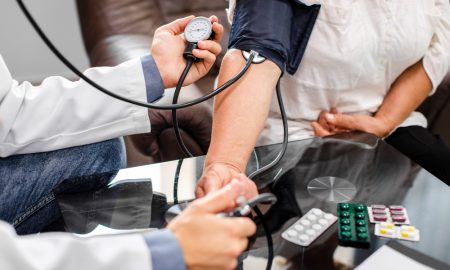
How Sedentary Lifestyle Can Shrink Your Muscles (And How to Prevent It)

A sedentary lifestyle doesn’t just make you sluggish. It slowly eats away at your muscles. This isn’t just a long-term issue. It can start in just a couple of weeks. If you have ever gone through a lazy spell and felt weaker or smaller, it is not your imagination. Your muscles are literally breaking down.
‘Muscle atrophy’ is what happens when muscles shrink because they are not being used. Your body sees inactive muscles as dead weight and starts recycling that tissue for other needs. This can happen to anyone who stops moving enough. Office workers, the elderly, and even athletes are stuck in recovery.
How a Sedentary Life Shrinks Your Muscles
When you sit around too much, your muscles aren’t being asked to do anything. They stop getting signals to grow or stay strong. Your body then flips into conservation mode, breaking down muscle protein to use elsewhere. The result? Weaker, smaller muscles in your arms, legs, and even your core.

Vitaly / Unsplash / You can lose noticeable strength and size in just two to three weeks. Studies show that once you stop moving, your muscles experience oxidative stress, and tiny molecules begin damaging muscle cells.
Normally, your body fights this with antioxidants. But with inactivity, those defenses drop, and damage builds up quickly.
Your body also turns on certain genetic pathways that tell it to start tearing down muscle. One of the main culprits is the NF-κB pathway, which ramps up muscle protein breakdown. Over time, muscles physically shrink, leaving you weaker, less stable, and more prone to falls or injuries.
You may even notice one leg or arm looks smaller than the other.
Shrinking muscles lead to real problems. Weak legs make stairs feel harder. Weak arms make carrying groceries a challenge. You might even feel off balance or more tired, even with small tasks. If one side of your body feels smaller or weaker than the other, that is a classic red flag.
Get Moving, Even Just a Little
The fastest way to fight back is with movement. Any kind of movement.
Strength training is the gold standard. When you lift, push, or pull weight, you give your muscles a reason to stick around. You don’t need a gym. Bodyweight exercises like squats, lunges, and push-ups at home work great. Aim for two or three sessions a week, hitting major muscle groups.

Olly / Pexels / Omega-3s are key players. These healthy fats reduce inflammation, which helps slow down the muscle breakdown process.
Cardio is just as important. Walking, biking, or swimming keeps your blood flowing and muscles engaged. You don’t need to run marathons. Just walking 4,000 steps a day can improve your health and keep your legs strong. The more you move, the better your muscles stay in shape.
Eat for Muscle, Not Just Energy
Food matters just as much as movement. Muscles need fuel, especially protein, to grow and recover.
If you are losing muscle, you probably aren’t getting enough. Try to hit 1.6 to 2.0 grams of protein per kilogram of body weight daily. Don’t cram it all into one meal. Spread it out throughout the day. Eat protein at breakfast, lunch, and dinner. Good sources include meat, eggs, fish, and beans.
Fatty fish like salmon and sardines are excellent. If that is not your thing, go for high-quality fish oil supplements. Shoot for 2 – 3 grams of EPA/DHA per day.
Creatine is another muscle saver. Taking 3 to 5 grams a day can help your muscles stay full and strong, especially during rest periods or recovery phases. It works best when combined with exercise, but it still helps even when you are not training hard.
More inLifestyle
-
`
How Good Is Street Food in South Korea?
Street food in South Korea is a way of life. You will see students grabbing skewers after class, office workers stopping...
July 17, 2025 -
`
Iconic American Vogue Editor-in-Chief Anna Wintour Steps Down After 37 Years
After 37 years at the helm of American Vogue, Anna Wintour has officially stepped down as editor-in-chief. The 75-year-old British editor...
July 10, 2025 -
`
Here’s Why Psychedelic Healing Doesn’t Need Big Pharma
Community is the heart of real psychedelic healing. Not sterile clinics. Not white lab coats. And, of course, not a billion-dollar...
July 4, 2025 -
`
Visit Tongass National Forest, the World’s Largest Temperate Rainforest
Tongass National Forest is where wild meets massive. It is the largest temperate rainforest on Earth, spreading across a jaw-dropping 16.7...
June 26, 2025 -
`
Luxury Superyacht Foodie Documentary Set for Premiere in Autumn 2025
Superyacht Foodie is setting sail into uncharted waters with a bold new documentary. “Superyacht Foodie Adventures” premieres in autumn 2025 and...
June 19, 2025 -
`
5 Doable Ways of Preventing High Blood Pressure (Hypertension)
Hypertension is sneaky. It usually shows no symptoms until it has done real damage. That is what makes it dangerous. If...
June 12, 2025 -
`
Nevada High School Student Arrested for Bringing Gun to Campus
In Nevada, a 10th-grade student at Community High School was arrested on Thursday afternoon after allegedly bringing a gun onto school...
June 6, 2025 -
`
Retirement Can Wreak Havoc on Your Mental Health. Here’s The Fix
Retirement sounds like a dream: No more meetings, no more commutes, and finally, time to do whatever you want. But retirement...
May 29, 2025 -
`
5 Must-Visit Spots in Peru for a Real Food Adventure
A real food adventure starts the second you land in Peru. This place doesn’t just serve food. It tells stories through...
May 22, 2025















You must be logged in to post a comment Login